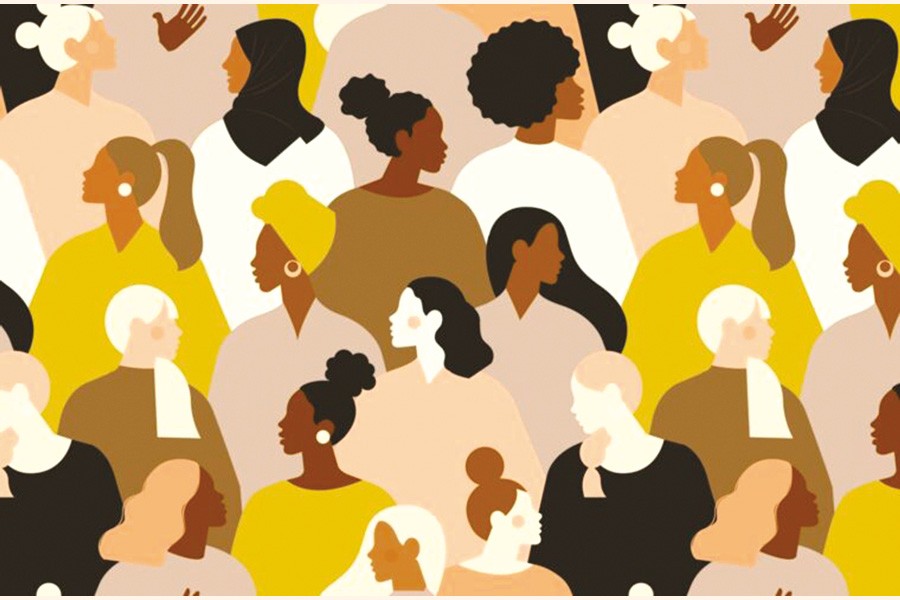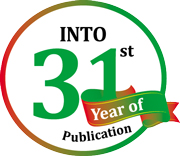 Illustration: www.lenfestinstitute.org
Illustration: www.lenfestinstitute.org  Almost every wishful profession holds a passionate story behind this choice. And a skillful profession should not exactly rely on any gender-based stereotype, yet the contextual concept varies from the theoretical approach. Not every profession is seen as suitable one for the practitioner from every gender, even in today's advanced time of free choice. Some professions are more manly or womanly to the societal view. Beyond the limited and congested view, many people go for their dream on a rather difficult pathway. Journalism has surely been one of those professions where women are not always seen to be a fit for, at least in this country where women still carry a baggage of stereotypes and taboos on their journey, especially in their career. But such pitfalls can also be a blessing in disguise for female journalists as they march on. This boosts up a confidence in their system as they already had to face many inhibitions just to pursue the career in the first place.
Almost every wishful profession holds a passionate story behind this choice. And a skillful profession should not exactly rely on any gender-based stereotype, yet the contextual concept varies from the theoretical approach. Not every profession is seen as suitable one for the practitioner from every gender, even in today's advanced time of free choice. Some professions are more manly or womanly to the societal view. Beyond the limited and congested view, many people go for their dream on a rather difficult pathway. Journalism has surely been one of those professions where women are not always seen to be a fit for, at least in this country where women still carry a baggage of stereotypes and taboos on their journey, especially in their career. But such pitfalls can also be a blessing in disguise for female journalists as they march on. This boosts up a confidence in their system as they already had to face many inhibitions just to pursue the career in the first place.
Merina Mitu has worked both for electronic and print media for the past four years. At present she has been on a short break owing to illness but eagerly waiting to go back to her journalist days as soon as she feels fit enough for the field. This young and enthusiastic journalist shared her experience with different aspects of the career period. She narrates: "Both my study and work sync in the sector of journalism. I have been interested in this profession since my university days. I personally feel that connection with this profession has taken me to another step of freedom. As soon as I realized my interest and skill set suitable for this sector, I started engaging myself within. I know that I can write, I can describe well, and it made me think that this could be my best way to serve our country. And it surely has increased my confidence to a great extent. I have outdone myself in various steps of my career. Many inertia points of my personality have diminished with the day-to-day involvement with journalism as I have worked as a reporter. And reporting needs direct field work surrounded with many other difficulties. As a woman, I think the first obstacle to pursuing a career comes from the family but I have been lucky enough not to fall a victim to this. I count myself as a privileged one in this case, but in the context of Bangladesh, this is a real issue for female journalists or even enthusiasts."
Merina wants to give a piece of wisdom to the newer generation of female journalists: they have to break the cycle to get into their own paths. And to make that sure, they have to have enough willpower and confidence.
Likely roadblocks: Dr Kaberi Gayen, a professor in the department of Mass Communication and Journalism at the University of Dhaka, has been in the academic field of journalism for a long time now. As a teacher and a researcher, she pinpoints the real scenario of this field for women in Bangladesh. "Women in the journalism career are seen mostly in a presentable way rather than doing the brainwork," she says, in the first instance. "There are surely some exceptions even in our country and I salute those few who have established their strong position even after facing so many prohibitions. There are more news presenters than reporters. Many of the working female journalists leave their field and go back to desk jobs. In the sector of cloud journalism, even from the world perspective, it does not include a noticeable number of women. It is clearly because women here are just as the labourers of a patriarchal structure and idealism and they cannot just break it. There are various obstacles in various steps of the profession. Firstly the family, then the extended society and then there is the office space where they face stereotypes. We have surely done the part of 'working women' but could not lessen their other issues that they need to come through before coming to the workplace. Most of the women need to maintain a very strict work-life balance while raising children, doing household chores whereas the male partners are more involved in their career. Obviously there are exceptional cases but this is the reality. As a nation and a society we have not been able to provide a very helpful environment here."
From the results of a study titled 'Women and Hijras in the Bangladeshi News Media', we find it with wonder that only ten percent of the active journalists are women. And, to echo Dr Gayen's analysis, most of these women associated with journalism in Bangladesh are found to be news presenters or anchors rather than as investigative journalists or even in higher positions of hierarchy or management positions.
In 2011, a report titled 'Global Report on the Status of Women in the News Media' was published by the IWMF or International Women's Media Foundation. In this study, 11 companies of Bangladeshi media were surveyed and an occupational status difference had been found based on gender. Men outnumber women with the ratio of 4:1 across the Asia and Oceania region, and certainly Bangladesh plays a specific role in this statistics. It is said in the paper, "Such degree of general marginalization illustrates a pattern of severe gender disparity within newsrooms. Women's absence is seen most profoundly at the top of companies in the key policy- and decision-making positions. Women are only around a fifth (21.6%) of those in governance(i.e., boards of directors), and barely present (9.2%) in top management (i.e., publishers,chief executive officers and chief financial officers).Women's representation is also minuscule (13.4%) in senior-level management, where decisions about hiring, story assignments, story content and other important decisions related to who will occupy journalistic positions are made."
This division is not only the case for Bangladesh or even the Asiatic countries for that matter. A study conducted with US journalists by PEW Research Center from last year shows that women are likely to cover news beats such as health, education and families and social issues and policy whereas male journalists are out there for the more 'active' or 'challenging' beats. The percentage of journalists reporting is also less for women.
Journalism as a confidence booster: By default journalism needs more mental and also physical strength in a person more than most other tasks. Field reporting, lack of a routine schedule and a surprising pile of assignments tagged along, the immediacy of the deadline- each and every factor tends to increase a person's habit of adaptability. Before and after joining this profession, people are evolving with their capabilities. The formula of 'survival of the fittest' does not only confine in the broader perspective of mankind but also it has a clear impact on our day-to-day life. To survive in an ever-transforming sector like journalism, correlated persons have to prove their fitness in several respects. To highlight the relation between confidence and women in journalism we must not only limit ourselves to the present time as Bangladesh saw a history in this regard. This history dates back to the time when it was not even normalised for women to be photographed. At that time- in 1947, the year of partition--journalism got Nurjahan Begum, who took the courage of publishing a weekly paper specifically for women readers. The name of the paper was 'Begum', and it surely paved the way for women in journalism in this arena. We had Sayeeda Khanam, the first professional photojournalist of Bangladesh, who was also associated with the aforementioned paper. Things were never easy for women to come out in this field but they anyway did- then and now. And it takes a huge amount of courage just to be here with all the negative presumptions even before starting their journey. Confidence in a woman, solely and unitedly, can be counted as a very codependent factor in the profession of journalism.
Besides her analysis of the harsh reality, Dr Gayen does not lose hope-- she believes that, as a profession, journalism has been a confidence booster for women as she calls it an 'all-time' job with many dimensions because there is no real break from it. Journalists, especially the female ones, are always in some kind of performance and connected with their public audience- both in visual and print media. And this performing face helps them to be confident in front of people and speak out for themselves. Besides these, overcoming all the obstacles and getting stronger every day also contributes to their self-esteem.
Self-efficacy theory developed by psychologist Albert Bandura in 1977 refers to the point that, as human beings, we all learn from what we have or have not done. The self-efficacy of a person influences their motivation, effort, perseverance, and resilience in future. Our deeds define most of our achievements and when someone repetitively succeeds on a specific scale of activity, it automatically derives a sense of confidence increase in their personality. And when a female journalist keeps succeeding on her work as the day passes by, besides all the difficulties she faces, it becomes more and more strong for her in the future. But it should also be remembered that for her to succeed, in the first place, there needs to be a scope to do so, just as it is needed in any other sector of life. Merits and capabilities should not be measured in the scale of limited molds such as gender, race, age or anything like these. Merit should be measured only when it is proved.
Surely there are many loopholes for a woman to be an active journalist in the context of Bangladesh but things can get more hopeful if there are necessary measurements implemented. Steps including gender-equality training from the very early days of the education system and an increased media regulatory framework can contribute a lot to the shortage of women in journalism. It will take combined activities of the societal bodies as well as the legal stakeholders. Confidence being a key to journalism can not take a woman, or even any person, very far if there is not an hospitable environment for them to grow in.
anindetamonti3@gmail.com
© 2025 - All Rights with The Financial Express
